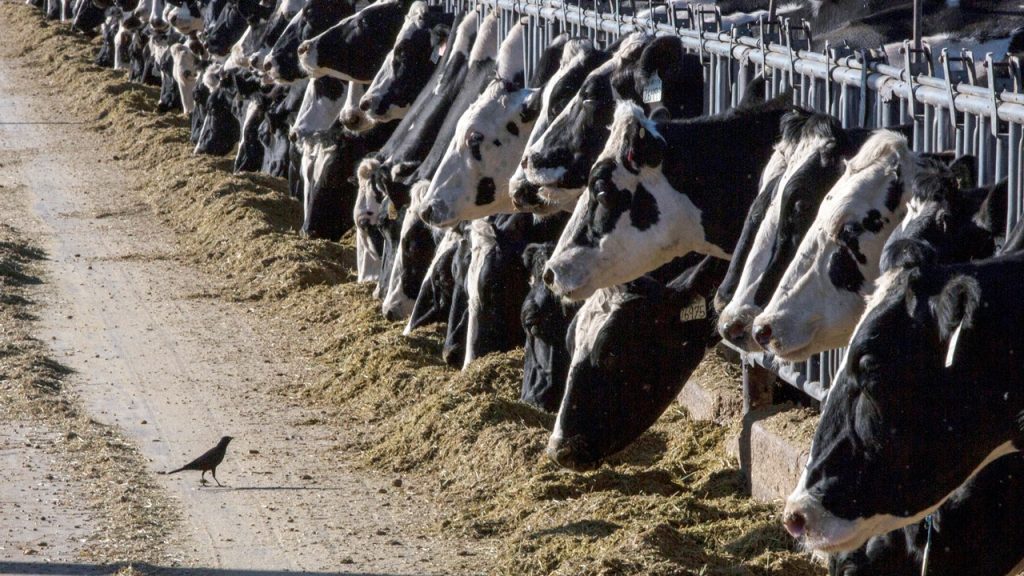Milk from dairy cows in Texas and Kansas has tested positive for bird flu, specifically the Type A H5N1 strain which is known to cause outbreaks in birds and occasionally infect people. The virus is primarily affecting older cows in those states and New Mexico, resulting in decreased lactation and low appetite. This comes after a case where goats in Minnesota were diagnosed with bird flu following an outbreak among poultry. However, the U.S. Department of Agriculture has assured the public that the commercial milk supply is safe and the risk to consumers is low as dairies are required to only allow milk from healthy animals to enter the food supply.
The federal government confirmed that there have been no changes to the virus in cattle that would make it more easily transmittable to humans. Dairy farmers in Texas first noticed symptoms of the virus three weeks ago, with cows falling ill and milk production decreasing. Tests for bird flu were carried out in Texas, and it is believed that the virus was transmitted to the cows through infected wild birds. Although cattle appear to recover from the virus within a week to ten days, bird flu outbreaks in poultry have had a more significant impact, resulting in the killing of flocks to eliminate the virus.
Bird flu has been detected in unpasteurized milk samples from sick cattle in Kansas and Texas, as well as in nose and throat swabs from affected dairy farms. The situation is evolving rapidly, with multiple agencies such as the Food and Drug Administration, Centers for Disease Control and Prevention, and officials from the three states involved in the response. The dairy industry has implemented enhanced biosecurity measures on farms to prevent the spread of the virus and protect livestock. Experts believe that avian influenza making its way to ruminants such as dairy cows was inevitable given the previous reports of bird flu in various mammal species.
The USDA stated that there is currently no concern about the safety of commercial milk supply or a risk to consumer health due to the presence of bird flu in dairy cows. Milk from infected animals is being diverted or destroyed, and pasteurization effectively kills viruses and bacteria, ensuring the safety of milk sold through interstate commerce. The Texas Department of Agriculture Commissioner described the situation as a “mystery dairy cow disease,” with affected cattle exhibiting symptoms similar to a cold such as lethargy and decreased appetite. University experts confirmed that the virus is impacting about 10% of lactating dairy cows in affected herds, different from high-path influenza outbreaks in bird flocks.
While the situation is concerning, officials are working to contain the spread of bird flu in dairy cows and prevent further transmission. The involvement of various agencies and states, along with enhanced biosecurity efforts implemented by the dairy industry, are aimed at safeguarding livestock and the commercial milk supply. With a rapid response and monitoring of the situation, experts are hopeful that the impact of bird flu on dairy cows can be minimized, ensuring the continued safety of milk products for consumers.


